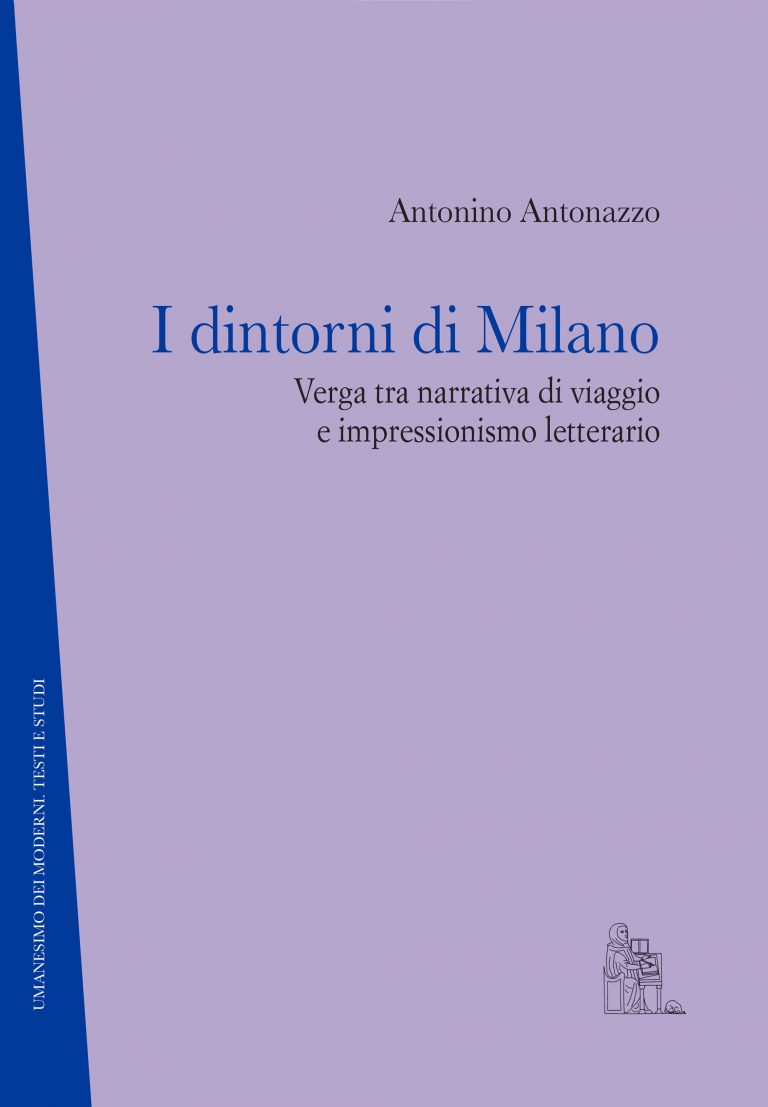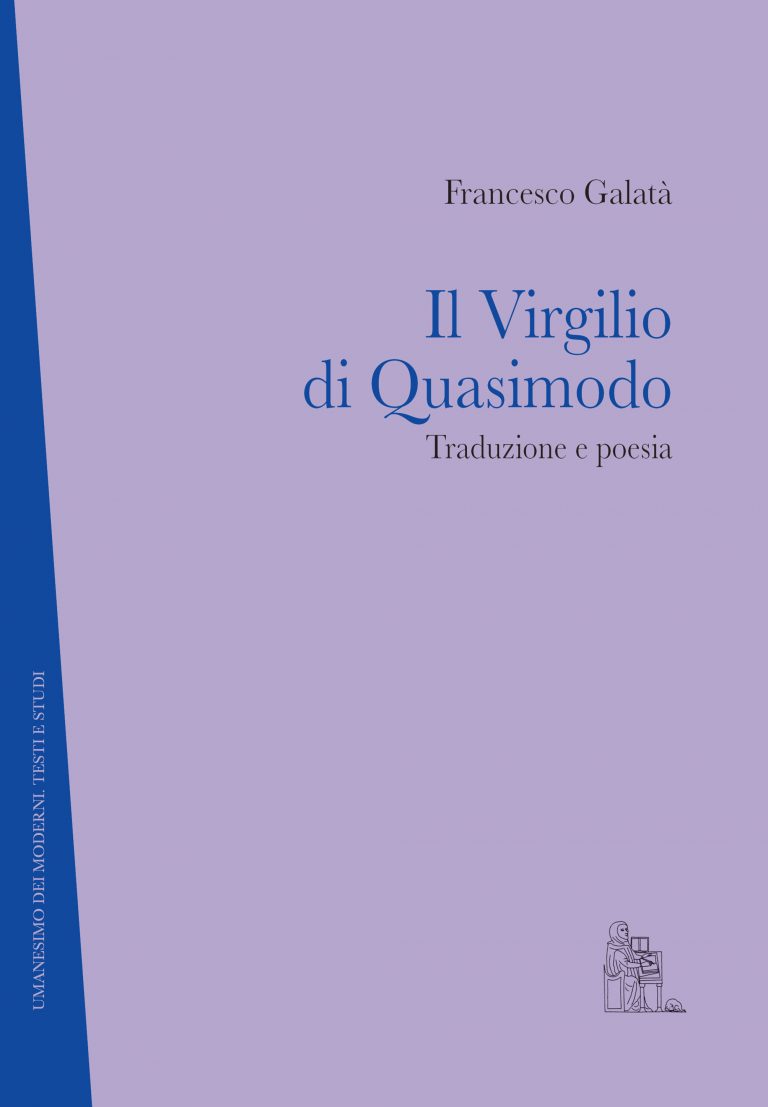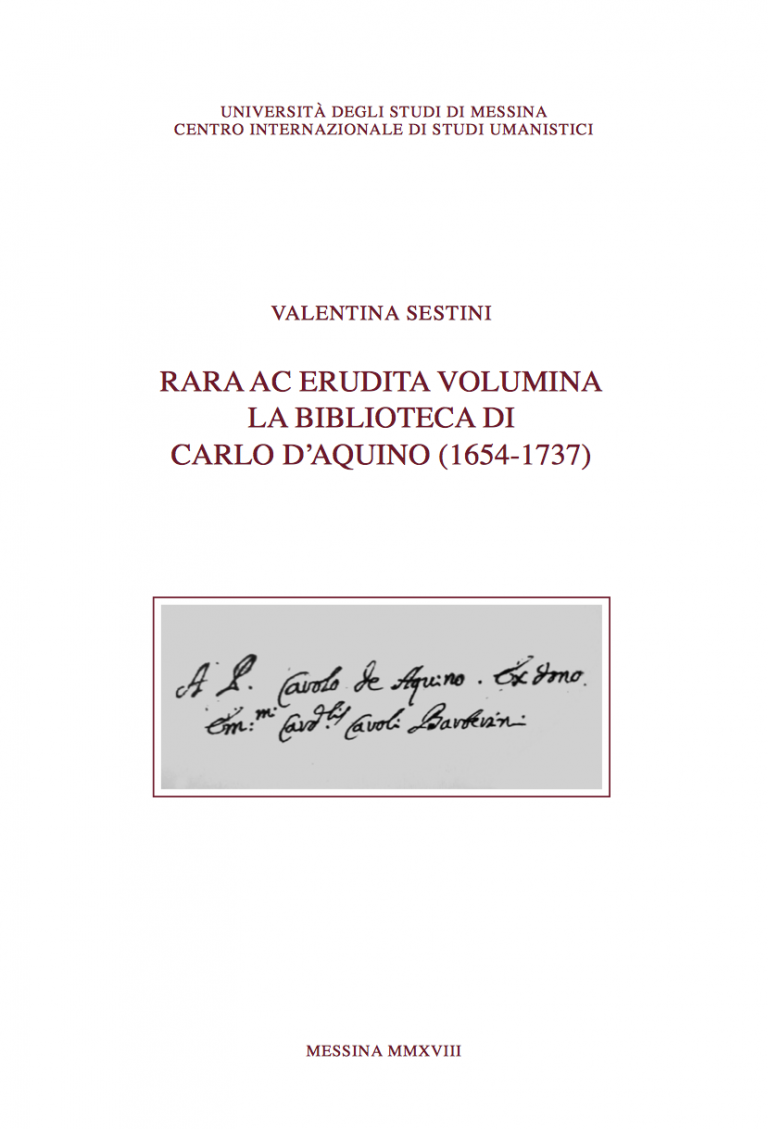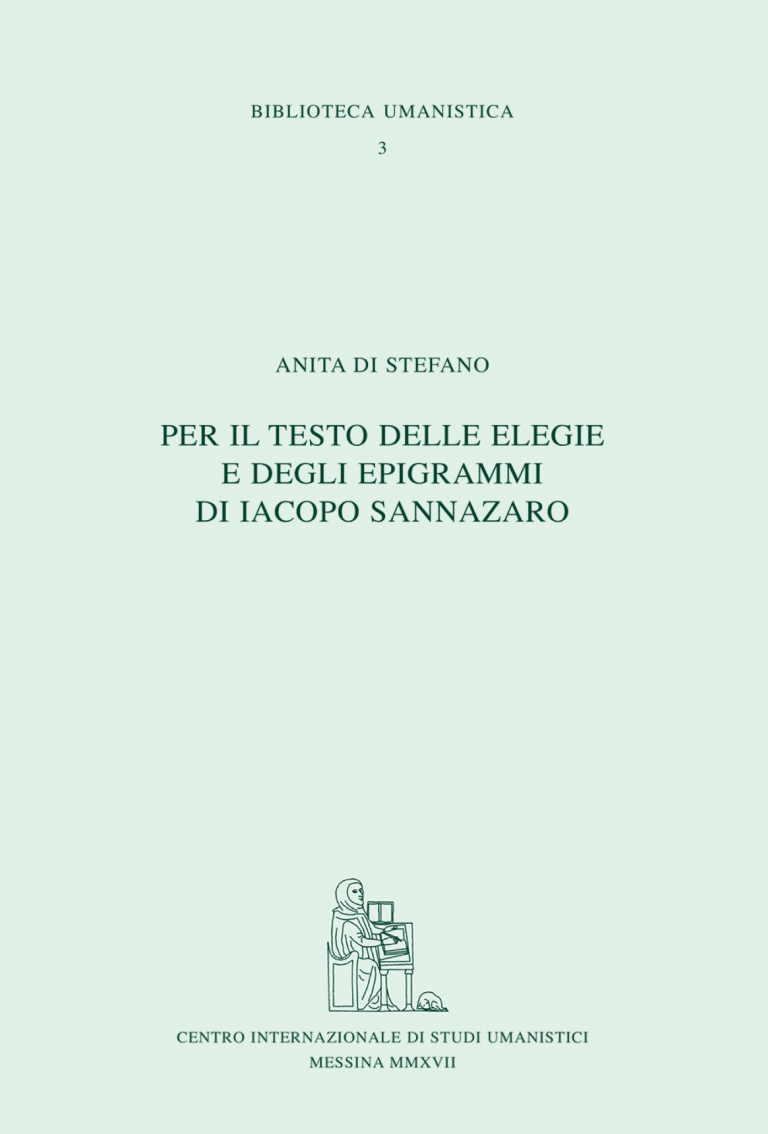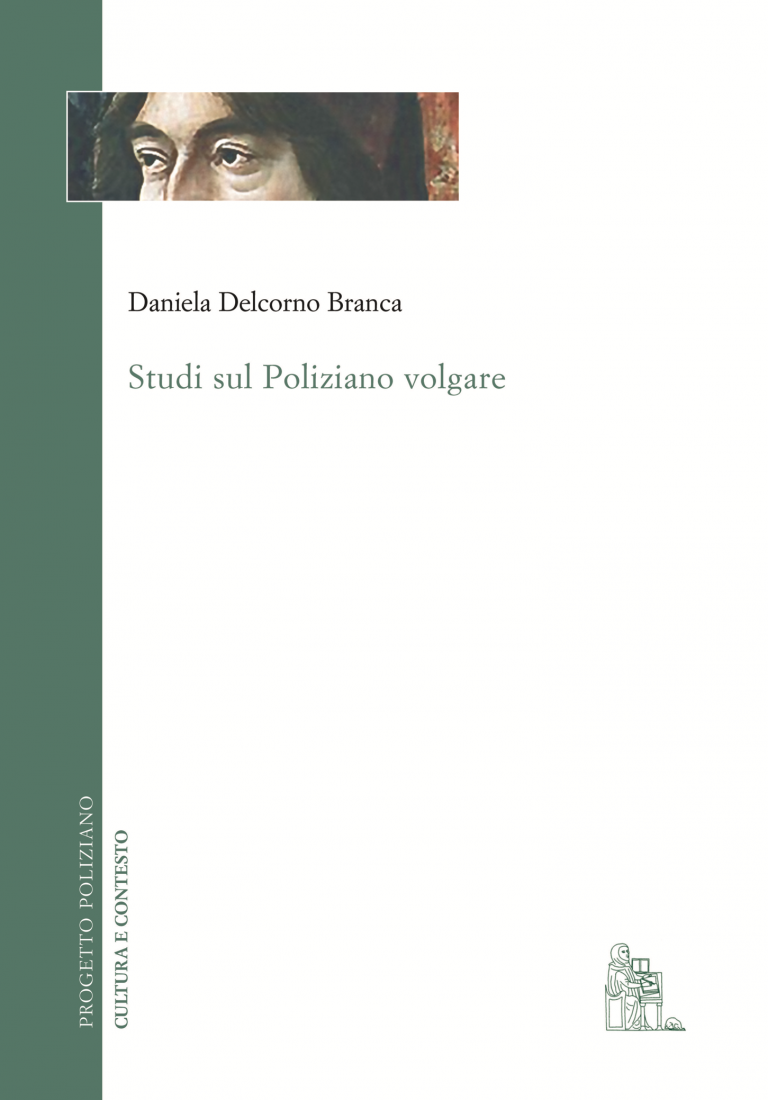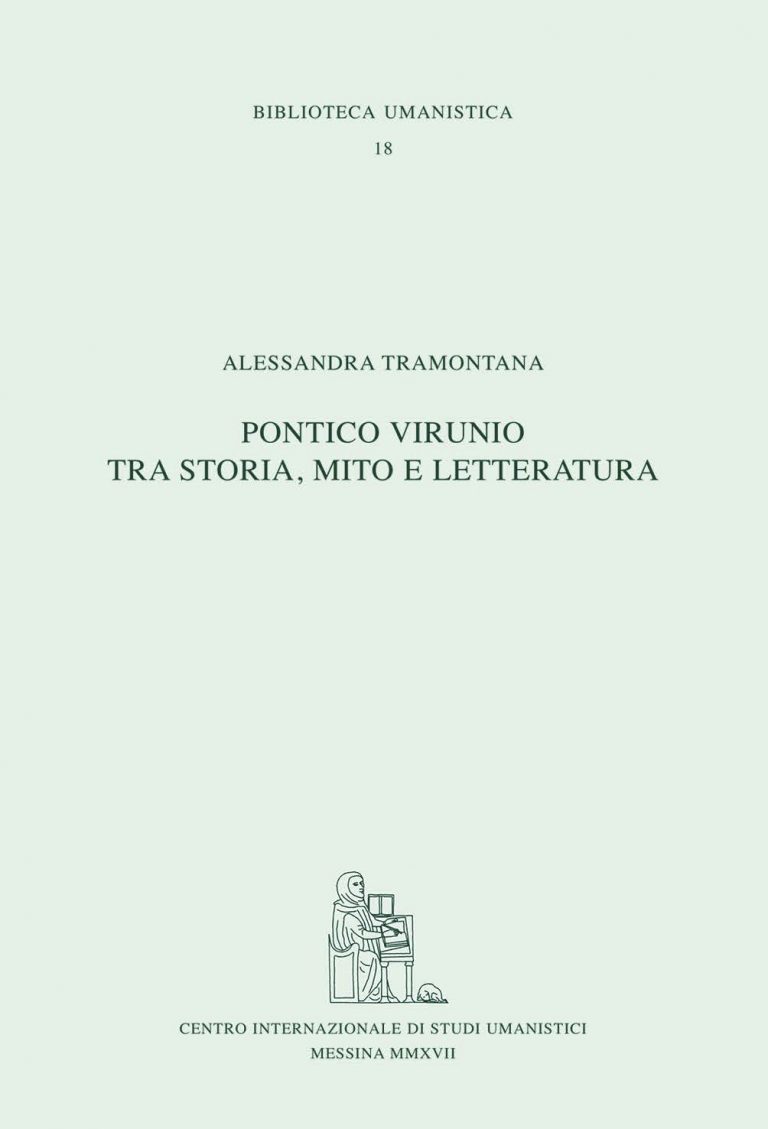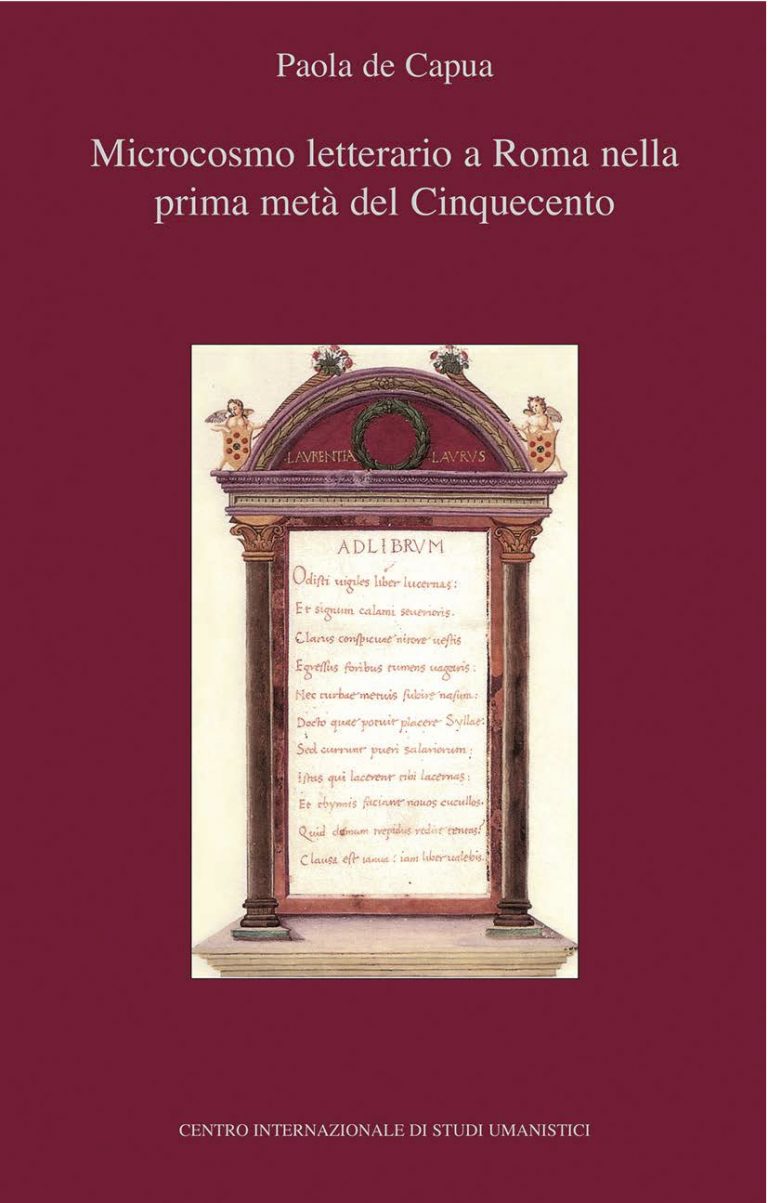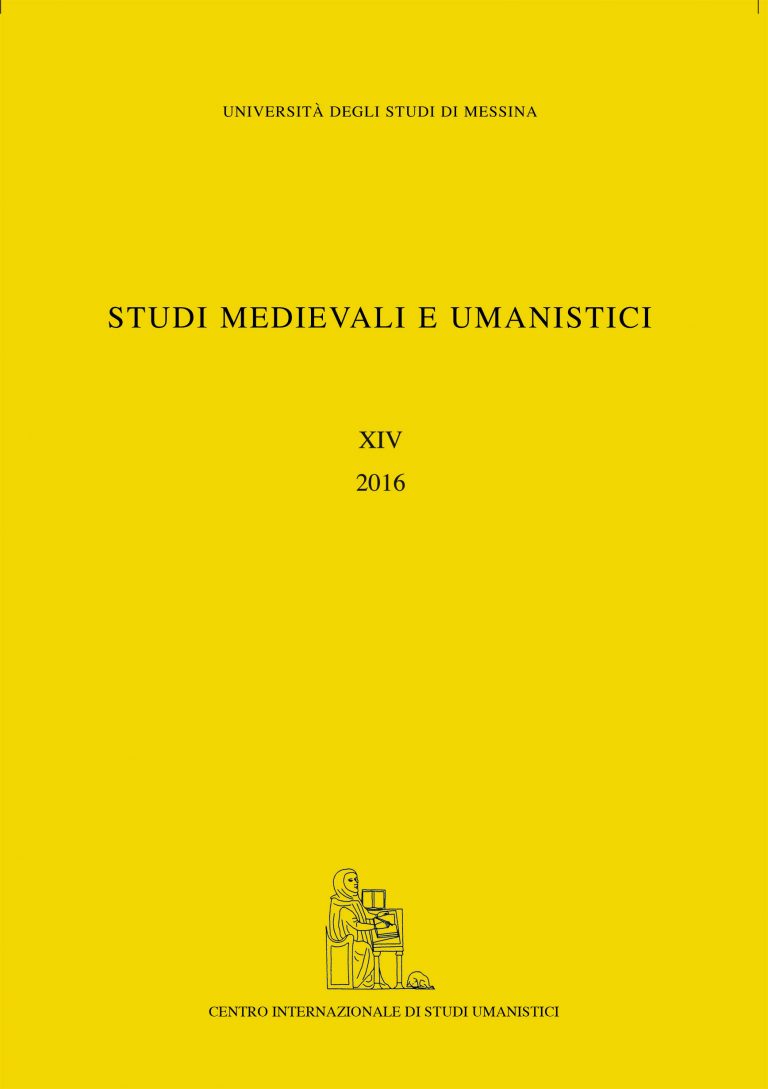di Antonino Antonazzo Messina, Centro Internazionale di Studi Umanistici, 2020, 184 pp.; 25 cm. ISBN 978-88-87541-77-9 € 30 Scritto da Verga per la miscellanea Milano 1881 di Giuseppe Ottino, nell’alveo delle celebrazioni dell’Esposizione nazionale, il bozzetto I dintorni di Milano è rimasto ai margini dell’attenzione degli studiosi. Sullo sfondo dell’importante iniziativa editoriale, di cui si ricostruisce la storia, il carattere di questo piccolo scritto d’occasione trova ora il meritato rilievo. Prendono corpo i rapporti col contiguo bozzetto di Luigi Capuana e si precisano i termini del radicamento nel filone delle cosiddette ‘Impressions de voyage’. Adeguatamente riposizionato…
Categoria: Collane
Il Virgilio di Quasimodo
di Francesco Galatà Messina, Centro Internazionale di Studi Umanistici, 2020, 292 pp.; 25 cm. ISBN 978-88-87541-76-2 € 40 Germinato al tempo del secondo conflitto mondiale, tra i Lirici greci e la raccolta Ed è subito sera, il Fiore delle Georgiche costituisce un perfetto caso di studio per entrare nel complesso sistema poetico delle traduzioni quasimodiane. Il volume indaga il contesto da cui si origina l’opera, con un’attenzione inedita alla sua vicenda elaborativa. Fra stampe rare e carte autografe per la prima volta messe a frutto, si è fatto ordine nella finora confusa trafila editoriale, rilevando guasti…
Il volgarizzamento pliniano di Cristoforo Landino
di Antonino Antonazzo Messina, Centro Internazionale di Studi Umanistici, 2018, 274 pp., tavv. VIII; 25 cm. ISBN 978-88-87541-79-3 € 45 INDICE GENERALE Premessa Abbreviazioni bibliografiche Tavola delle sigle Introduzione I. Genesi e tradizione del volgarizzamento 1. Il progetto del «principato» linguistico fiorentino 2. Landino e Plinio 3. I codici di dedica e l’editio princeps II. Le fonti latine III. Storia del testo 1. La revisione dei codici escorialensi 2. Il rapporto tra i testimoni 3. Le rubriche IV. Fra teoria e prassi versoria 1. Il Proemio: un manifesto programmatico 2. Per un’analisi della tecnica traduttiva V. La filologia…
Rara ac erudita volumina. La biblioteca di Carlo D’Aquino (1654-1737)
di Valentina Sestini Messina, Centro Internazionale di Studi Umanistici, 2018, 369 pp.; 25 cm. ISBN 978-88-87541-64-9 € 45 INDICE GENERALE Premessa I. «Vir doctus ac probus»: vita e opere di Carlo d’Aquino II. La biblioteca di Carlo d’Aquino. L’inventario ANT. CAT. 18 (Roma, Biblioteca Nazionale Centrale ‘Vittorio Emanuele II’) 1. «Rara ac erudita volumina»: la ricostruzione della biblioteca 2. Il lettore Carlo d’Aquino: tracce d’esemplari Catalogo della biblioteca di Carlo d’Aquino Norme di consultazione Catalogo Appendice Indice dei nomi Indice degli autori Indice dei tipografi, editori e librai
Pascoli e le vie della tradizione
Atti del convegno internazionale di studi (Messina, 3-5 dicembre 2012), a cura di Vincenzo Fera, Francesco Galatà, Daniela Gionta, Caterina Malta Messina, Centro Internazionale di Studi Umanistici, 2017, 903 pp.; 25 cm. ISBN 978-88-87541-70-0 € 100 INDICE GENERALE Premessa Guido Baldassarri, L’officina ‘Conviviale’ e i classici Giovanni Bàrberi Squarotti, Tradizione classica e tematica risorgimentale nell’ultimo Pascoli Francesco Bausi, Dall’isola dei poeti alla buona madre Bologna. Il nuovo Pascoli di Odi e Inni Mario Tropea, Socialismo, colonialismo, emigrazione nell’opera di Giovanni Pascoli Giorgio Forni, Guerra e pace nell’oratoria messinese Francesco Citti, «Son favole»: percorsi pascoliani tra saggi letterari e traduzioni.…
Per il testo delle Elegie e degli Epigrammi di Iacopo Sannazaro
di Anita di Stefano Messina, Centro Internazionale di Studi Umanistici, 2017, XVIII+221 pp., tavv. VII; 25 cm. ISBN 978-88-87541-66-3 € 45 INDICE GENERALE Premessa Abbreviazioni bibliografiche I. Storia di una perenne perfettibilità II. L’autografo ambrosiano e gli zibaldoni viennesi III. L’archivio dell’attività poetica (Vat. lat. 3361) IV. Testimonianze apografe e la vicenda delle antiche stampe V. Linee dell’iter redazionale dei carmi VI. L’elegia a Federico d’Aragona VII. Per una recensio della tradizione manoscritta e a stampa dei carmina VIII. Prospectus carminum Indice delle tavole Indice dei manoscritti e delle fonti d’archivio Indice dei nomi
Studi sul Poliziano volgare
di Daniela Delcorno Branca Messina, Centro Internazionale di Studi Umanistici, (Cultura e Contesto, 2), 2016, 310 pp.; 25 cm. ISBN 978-88-87541-65-6 € 70 INDICE GENERALE Tabula gratulatoria Premessa I. Tradizione classica e poesia volgare Il modello ovidiano: le Metamorfosi nei bassorilievi del Palazzo di Venere Fra commento e poesia. Schede per le Stanze Poliziano e il pathos a repetitione II. Il laboratorio delle Rime Per il linguaggio dei rispetti Metodo umanistico e presenza di Esopo nelle Rime Lucrezia, Poliziano, Lorenzo: convergenze fra lirica sacra e lirica profana Per la lauda alla Vergine III. Il professore-poeta Percorsi danteschi…
Pontico Virunio tra storia, mito e letteratura
di Alessandra Tramontana Messina, Centro Internazionale di Studi Umanistici, 2017, XXV+349 pp.; 25 cm. ISBN 978-88-87541-73-1 € 75 INDICE GENERALE Premessa Abbreviazioni bibliografiche Sigle dei codici Abbreviazioni delle stampe I. La leggenda di Pontico Virunio II. La biografia dell’Ubaldi III. I manoscritti IV. L’attività filologica e letteraria 1. Sulla biblioteca di Pontico Virunio 2. Il ruolo del greco e gli Erotemata 3. Greco ed esegesi 4. Il De corruptis nominibus et obscuris locis auctorum 5. Tracce di esegesi V. L’attività editoriale 1. Pontico corrector a Reggio e a Ferrara 2. La collaborazione con Gershom Soncino 3. L’epistola a…
Microcosmo letterario a Roma nella prima metà del Cinquecento
di Paola de Capua Messina, Centro Internazionale di Studi Umanistici, 2016, 268 pp.; 22 cm. ISBN 978-88-87541-63-2 € 45 INDICE GENERALE Premessa I. Le celebrazioni capitoline del 1513 e l’Epulum di Giulio Simone siculo II. Il codice Vat. lat. 5356 III. Savoia e la sodalitas dei Savoini IV. I 72 esegeti V. I sodalitia urbani in due lettere a Iacopo Sadoleto VI. La Ninfa dell’Acqua Vergine e i poeti negli horti del Colocci VII. Il Molza e il carme ai sodali degli horti blosiani Indice delle figure Indice delle fonti manoscritte Indice dei nomi
Studi medievali e umanistici, XIV
XIV (2016) Messina, Centro Internazionale di Studi Umanistici, 2016, XXX+640 pp., tavv. XLVI; 25 cm. ISSN 2035-3774 € 120 INDICE GENERALE Vincenzo Fera, Filologia e Tyche. Ricordo di Alessandro Daneloni Bibliografia di Alessandro Daneloni Antonio Rollo, La trasmissione medievale dei graeca Eleanor Dickey, Who Used the Hermeneumata Pseudo-dositheana? Evidence for Greek Speakers in the Medieval West Vincenzo Fera, Petrarca e il greco Valeria Mangraviti, Leonzio Pilato interprete dei graeca nelle Pandette Marco Petoletti, Boccaccio e i graeca David Speranzi, Mani individuali e tipi grafici dei graeca nei codici latini dell’umanesimo Daniela Gionta, Graeca umanistici in codici antichi di…

